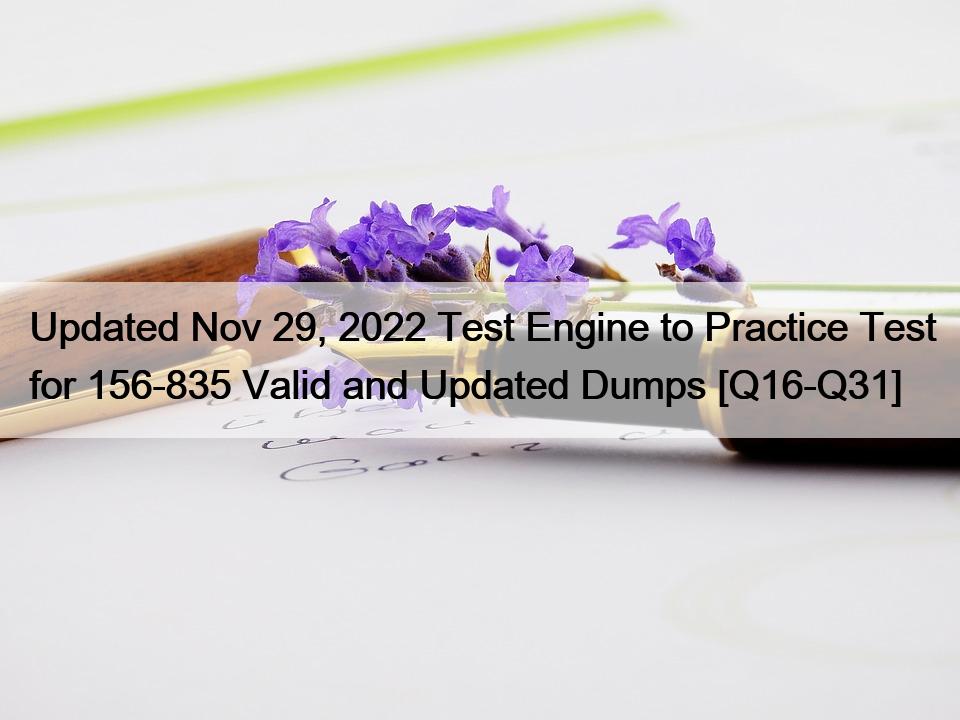Updated Nov 29, 2022 Test Engine to Practice Test for 156-835 Valid and Updated Dumps
Exam Questions for 156-835 Updated Versions With Test Engine
CheckPoint 156-835 Exam Syllabus Topics:
| Topic |
Details |
| Topic 1 |
- Understand and explain how the Orchestrator’s downlinks, uplinks, management, and sync ports function
- Identify the essential components of the Maestro system
|
| Topic 2 |
- Identify how Virtual System Extension (VSX) works
- Describe how Maestro uses Hyperscale Technology
|
| Topic 3 |
- Describe the basic use of the asg diag command to collect system diagnostics
- Learn how to create, delete, and modify Security Groups
|
| Topic 4 |
- Learn how to configure interfaces using CLISH
- Understand the basics of the Dual-Site environment
|
| Topic 5 |
- Demonstrate how to use traffic monitoring commands
- Describe how the Gaia Command Line Interface (CLI) supports the configuration of MHO appliances
|
| Topic 6 |
- Recognize how to account for Dual-Site fail-overs
- Describe the purpose of the Security Group Database
|
| Topic 7 |
- Understand the four distribution modes that Maestro uses to assign packets to a Security Gateway Module
- Recognize the main characteristics of Scalable Platforms
|
| Topic 8 |
- Evaluate how traffic flows through a Maestro environment
- Describe the different layers of the OSI model involved when debugging the SG
|
156-835 Exam Dumps – Free Demo & 365 Day Updates: https://www.validexam.com/156-835-latest-dumps.html







Leave a Reply